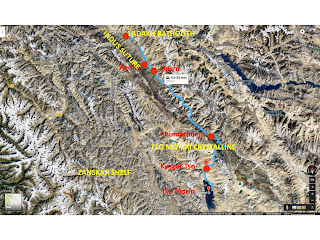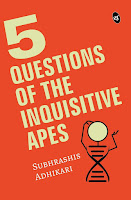CONTENT
Summary
Day1: LEH - Do Nothing
Day2: LEH-Around
Day3-4: LAMAYURU
Day5,6,7: NUBRA - PANGONG TSO
Day8: LEH
Day9: TSO MORIRI
If Kerala is god’s own country then Ladakh is the god of all countries.
Either you go their by flight or road you will enjoy all the same. Just make sure you have enough time. 10 days is good.
Summary
Day1: LEH - Do Nothing
Day2: LEH-Around
Day3-4: LAMAYURU
Day5,6,7: NUBRA - PANGONG TSO
Day8: LEH
Day9: TSO MORIRI
If Kerala is god’s own country then Ladakh is the god of all countries.
Either you go their by flight or road you will enjoy all the same. Just make sure you have enough time. 10 days is good.
Ladakh is not just about the mountains, but also about the rich history, culture and the fusion of religions. One can still hear the echoes of the hymns of ancient buddhist saints, the footsteps of traders along the silk route, and the screams of the battles between the great kings. This place is so high up in the mountains and still it was not shielded from the influence of Indian culture and Tantric Buddhism. At the same time the difficult geography acted, not as a barrier, but a filter to the influence of Turks, Mughals, British and modernisation. Only recently has tourism began to loosen the filter.
Julley! It is the magic word of Ladakh which is used to greet people. That would be the first, and probably the only native word you will learn, apart from ‘tso' that means ‘lake’ and ‘la’ meaning ‘pass’.
MAPS
ITERNARY
There are 4 different routes from Leh:
1 night 2 days in Lamayuru: Gurudwara Pathar Sahib, Magnetic Hill, Indus-Zanskar Confluence, Alchi, Nurla, Lamayuru Monastery, Dah, meet the ‘Aryans’, Pre-historic rock art.
1 night 2 days in Nubra Valley: Khardung La, Diskit Monastery, Hunder Dunes, Bactrian Camel ride
1 night 2 days in Pangong: Pangong Tso, Chang la, Horse/Yak ride, can reach directly from Nubra (preferred). Some so it in a day (5 hrs one way drive) from Leh (only if you do not have time).
1 night 2 days in Tso Moriri: Chumathang Hot-spring, Kyagar Tso, Tso Moriri, Tso Kar, Taglang La, Nomads.
2+ nights in Leh: This is your base for all travels. It is here that you will spend most nights, plus one full day rest. It is a good thing because this is where you get the best food. Places to see: Hemis Monastery, Thicksey Monastery, Shey Palace, Stok Palace, Spituk Monastery, Leh Palace, Shanti Stupa, Leh Market, Jama Masjid
TIPS TO AVOID AMS
‘Don’t be Gama in the land of Lama’ - A signboard in Leh
- Rest in the hotel for at least 24 hours, if not 36hrs. Make sure you carry something to keep yourself entertained (Don’t depend on internet), because it is going to be a boring start to your exciting trip. Sleeping is not an option. You are not supposed to sleep in the afternoons!
- No smoking of drinking alcohol.
- Do not do a lot of physical activities on the first couple of days, which I was told includes sex. If you are travelling with kids, make sure they do not jump around a lot during the first day.
- Drink 2-3 litres of water a day. Not less, not more.
- Eat lots of carbohydrates. Forget KETO diet.
- If you are traveling with heart patients, old persons or small kids it is advisable to consult the family physician before hand.
- DIAMOX tablet helps fool the body to take more oxygen. Two tablets a day for 7-days starting one day before the date of travel. Again, consult a doctor.
CAB
Unless you are driving your own car, you have to hire taxi from locals only. It is a monopoly of local taxi union, which makes it expensive too. However, it is a short 4-5 months season. That is the only time these guys earn money, that helps them survive the rest of the harsh winters. When you think about it, it is not that unfair.
We were lucky to have a polite driver named Rigzin. He has more than 12 years experience, and knows every road in Ladakh by heart. He is also a very skilful driver. His number: +91 95-96-604991. 10 days cost us ~40,000 INR
ACCOMODATION
LEH: The Auspicious Hotel
website: http://www.theauspicioushotel.com/
contact: Mr Robin +91 94-19-177864
review: Comfortable hotel with very friendly staff.
Rooms are nice clean and big.
While away from the noise and pollution of the main market, it is just 2-3 minute walk to the market.
Food is good. Non-veg is limited. They serve buffet. Breakfast is complimentary.
Free Wifi (slow connectivity).
Book in advance. They are mostly full in peak seasons.
NURLA: Faryork Resort (2500INR/night including food)
Cottages right beside Indus river. The resort had good food and friendly staff. Actually one super active staff, while the rest just relaxed. THERE ARE HOME STAYS IN DAH AND ALSO PLENTY OF HOTELS IN LAMAYURU.
HUNDER: The Snow Leopard
It is a nice hotel. It is big, clean and has spacious rooms. The bathroom is also neat and big. Do not expect to find any mobile towers in this place. We spent our night in the comfortable rooms overlooking the hills.
Contact Dawa Norbu
email: hotelsnowleopardhunder@gmail.com
www.snowleopardhotel.com
phone;01980-221097/200289, 09469176759
Bank details,
Hotel snowleopard
Acc.no 0152010100000666
IFSC code Jaka0diskit
Branch J&K bank Diskit
Nubra Ladakh J&k.
PANGONG TSO: New Wonderland Tents
For booking contact Norbu at 9469085995. This is amongst the few accommodations that is right beside the lake. On the back of the tents are the snow capped mountains. The price was 4000 including food. We got some discount. Electricity comes only between 7:30 to 11 pm through the generators. No room heater is available for safety reasons. Not that we required it. The tent was pretty warm. Use the toilet waters economically. Water is scanty, and water bottles are trucked from Leh. Per bottle here costs 50INR. The dinner was good. Tawa fry with dal was very good.
TSO MORIRI: Hotel Lake View
There aren’t many hotels in this place. It would be a good idea to book before hand. Reach early to get view rooms. Water is available from 7:30 to 9 pm and 7 to 8:30am, and electricity from 7:30 to 11pm. That’s the time for you to charge your camera, mobiles or any other necessary gadgets you have.
www.tsomoririhotellakeview.com
Contact Skarma: 9419299673
A/C holder name : SKARMA TUNDUP
A/C Number :31747390557
Branch :Mc Loed Ganj
IFSC : SBIN0004250
FOOD
Leh is where the good foods are.
Top Choices: Budshah Inn, Chopsticks, Summer Harvest. All in the market.
GEOLOGY
Ladakh is sandwiched between the Himalayas and Karakoram Range. It is a part of two fore-arc complex. In the north is the Shyok Suture Zone. Shyok Formation (Nubra Valley) is not continuous, but occurs as thrust slices and lenses. It is described as an ophiolitic melange and it consists of serpentinises and ultrabasic rocks intercalated with volcanoclastics and sedimentary rocks. In the south lies the Indus Suture zone (on the way to Lamayuru). Both Indus and Shyok suture zones represents two northward dipping subduction zones of Cretaceous age. Ladakh Batholith is situated north of Indus Suture Zone, while north of the Shyok suture zone is the Karakoram Batholith. Khardung volcanics lies just south of the Shyok Suture zone. Shyok ocean closed when Ladakh arc and Karakoram block collided forming Shyok forearc ophiolite (between 74 Ma and 97 Ma). Later the Indian plate collided with Ladakh arc (50-60 Ma) forming the Indus suture.
 |
| Stratigraphy |
 |
| Map |
OTHER TIPS
Phone connection will be an issue. Only BSNL and Airtel post paid connections work, that also mostly in Leh. Plan accordingly. Forget 4G, even 2G is very very slow. You are here to enjoy nature, forget internet for few days.
Though the outside temperature was around 15C, out in the sun it felt like 40C. Once the sun was down it became cold again very fast. So, pack for both winter and summer. Good idea to take Shades, hats and or umbrellas, sunscreen, few summer clothes.
Carry cash (Lack of ATMS) and water (very expensive) from Leh to Nubra, Pangong Tso and Tso Moriri.
For any questions or suggestions you can email me at subhrashis.adhikari@gmail.com.
For any questions or suggestions you can email me at subhrashis.adhikari@gmail.com.
















































































